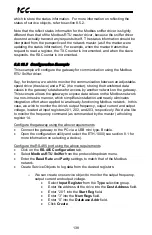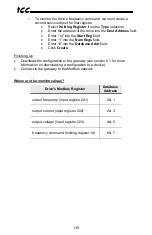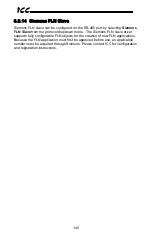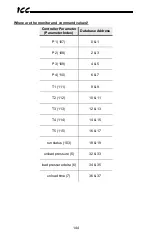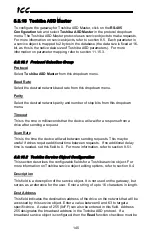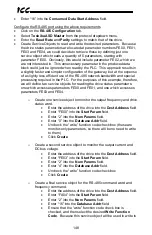
148
ICC
•
Enter “16” into the
Consumed Data Start Address
field.
Configure the RS-485 port using the above requirements
•
Click on the
RS-485 Configuration
tab.
•
Select
Toshiba ASD Master
from the protocol dropdown menu.
•
Enter the
Baud Rate
and
Parity
settings to match that of the drive.
•
Create Service Objects to read and write the desired parameters. Because
the drive status parameters are located at parameter numbers FE00, FE01,
FE03 and FE04, we could decide to retrieve these by defining just one
service object which reads a quantity of 5 parameters, starting with
parameter FE00. Obviously, this would include parameter FE02, which we
are not interested in. This unnecessary parameter in the produced data
block could just be ignored when read by the PLC. This approach results in
a slightly faster and simpler configuration of the gateway, but at the expense
of a slightly less efficient use of the RS-485 network bandwidth and special
processing required in the PLC. For the purposes of this example, therefore,
we will define two service objects for reading the drive status parameters:
one which accesses parameters FE00 and FE01, and one which accesses
parameters FE03 and FE04.
o
Create one service object to monitor the output frequency and drive
status word.
•
Enter the address of the drive into the
Dest Address
field.
•
Enter “FE00” into the
Start Param
field.
•
Enter “2” into the
Num Params
field.
•
Enter “0” into the
Database Addr
field.
•
Uncheck the “write” function code check box (these are
monitor-only parameters, so there will be no need to write
to them)
•
Click
Create
.
o
Create a second service object to monitor the output current and
DC bus voltage.
•
Enter the address of the drive into the
Dest Address
field.
•
Enter “FE03” into the
Start Param
field.
•
Enter “2” into the
Num Params
field.
•
Enter “4” into the
Database Addr
field.
•
Uncheck the “write” function code check box
•
Click
Create
.
o
Create a final service object for the RS-485 command word and
frequency command.
•
Enter the address of the drive into the
Dest Address
field.
•
Enter “FA04” into the
Start Param
field.
•
Enter “2” into the
Num Params
field.
•
Enter “16” into the
Database Addr
field.
•
Ensure that the “write” function code check box is
checked, and then select the desired
Write Function
Code
. Because this service object will be used to write to





